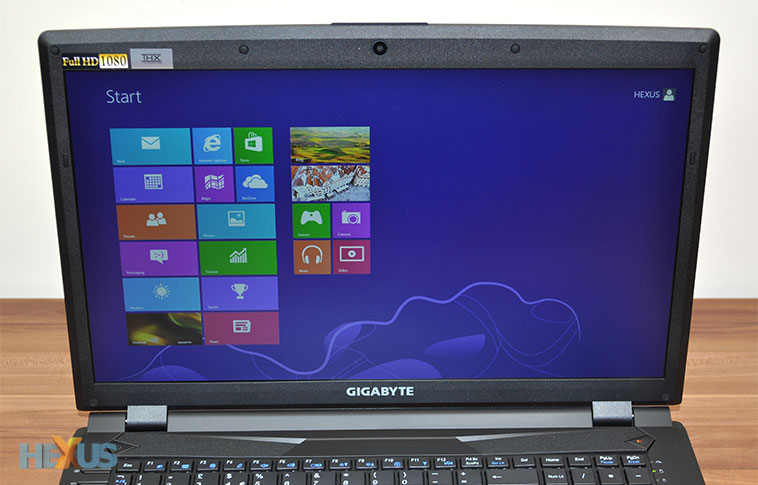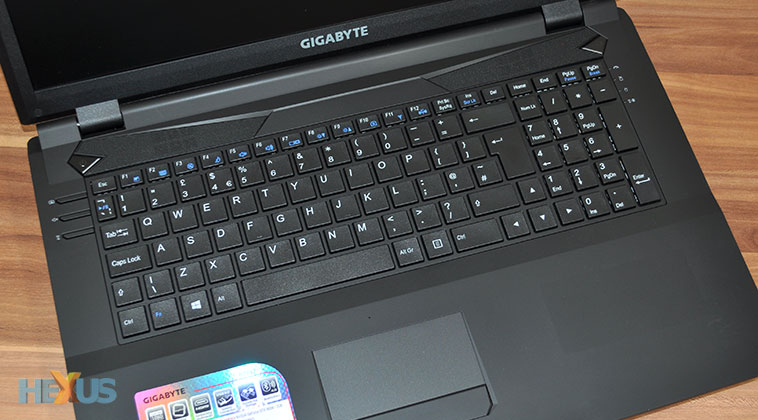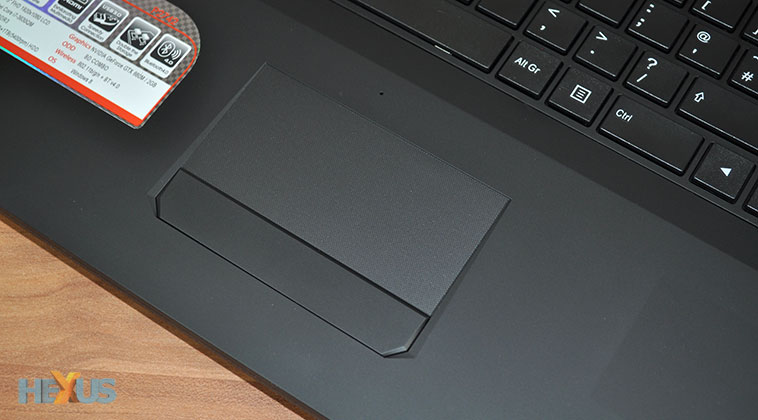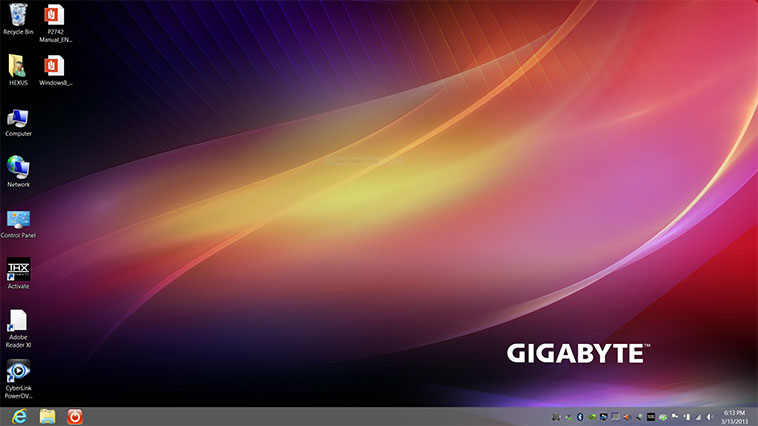Display and Sound
A laptop's display can make or break its gaming credentials, and the good news here is that Gigabyte has a very enjoyable panel at the helm of the P2742G. Any gamer will immediately appreciate the large 17.3in surface, but there's more to this display than sheer size.

Colour reproduction is good, and though maximum brightness isn't quite as high as we'd like (260 cd/m2), the matte coating ensures that glare is kept to a minimum, making this a decent display in most conditions. Horizontal viewing angles are excellent, while the vertical axis is less forgiving, and of course there are over two-million pixels to play with courtesy of the full-HD, 1,920x1,080 resolution.
This is a very good panel for a gaming laptop, but considering the size of the machine, it's a shame the P2742G doesn't complete the multimedia package with a stellar sound system. Instead, the pair of upward-facing stereo speakers provides a generic laptop listening experience; meaning reasonable volume, coupled with tinny output and very little depth.
Keyboard and Trackpad
Gigabyte describes the P2742G as 'a high-end gaming notebook,' but you wouldn't know it by looking at the keyboard alone. The layout includes a numpad, as is to be expected on most 17.3in machines, but there are no obvious gamer-specific adjustments.

Common tweaks - such as moving the Windows key or giving prominence to WASD - aren't used, with Gigabyte sticking to a largely standard configuration. There's no keyboard backlighting, and the keys themselves feel rudimentary; typing on them is absolutely fine, but they don't exactly hug the fingertip and leave you wanting to come back for more.
Utilitarian would be the best way to describe the keyboard, and the only real points of interest are the few extra keys dotted around the sides. To the left of the keyboard, three narrow keys are provided as a means to toggle the webcam, sound or wireless radios, though they're arguably unnecesary as the same commands are available via the function keys. What's more useful is the VGA toggle switch positioned above the top-right corner of the keyboard - with a single press it can be used to switch between IGP-only and Nvidia Optimus modes.

Gigabyte's Elan-powered trackpad is quite basic, too. Multi-touch gestures are supported - and we had a good level of success with common controls such as two-finger scrolling - but the rough-textured surface doesn't feel particularly inviting. Given the size of the palm rest we'd have preferred a taller trackpad area, and though the mouse buttons are fit for their purpose, the dull audible click and a very uneven amount of travel make left- and right-clicks feel primitive. It wasn't long before we plugged in an external mouse, as we imagine most gamers will do.
Software
Touchscreen or no touchscreen, the operating system of choice for most new laptops is Microsoft's Windows 8. Gigabyte provides a 64-bit install on the 128GB SSD, and reserves a 10GB chunk of said drive to act as a recovery partition. The 1TB hard disk remains untouched and provides a good amount of spare storage space for the end-user.

And credit where it's due; Gigabyte's out-the-box configuration has a refreshing lack of bloatware. We could do without the Bing Bar - though that's easily uninstalled - but there's very little else to clutter the system and potentially hamper performance. CyberLink PowerDVD is in place to assist the Blu-ray drive, a trial of Microsoft Office is installed as standard, and Gigabyte has added a software power button to the taskbar for anyone who has trouble making their way around in the absence of a Start menu. It's all nice and tidy, with no nagging third-party security package, and better yet, there's a bundled Nvidia-sponsored license key for Assassin's Creed III.









